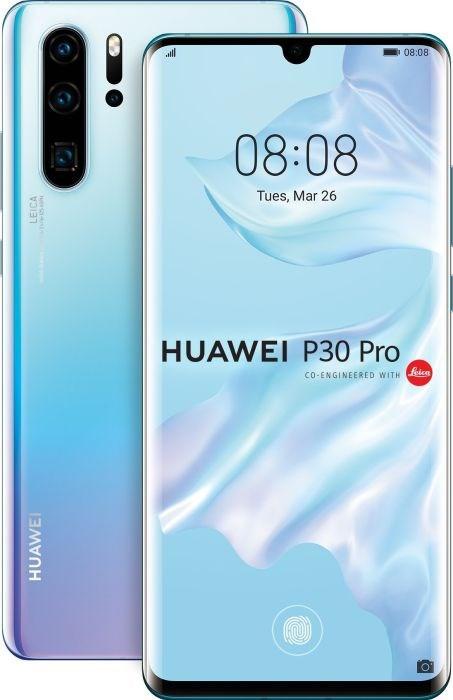

Huawei P30 Pro tested: the perfection of a platform
The Huawei P30 Pro stomps the competition into the ground. The smartphone is so well optimised that the rest of the field doesn't stand a chance at the moment. However, the devil is - as always - in the detail
The specs sound like flagship standard, but what Huawei delivers with the P30 Pro is the perfection of a system. The Huawei P30 Pro is tuned, optimised and probably the best you can get out of the specs.
In short, the Huawei P30 Pro is a curb stomper.

Come what may: The P30 Pro puts them all away. Stomps them into the ground. So here's a song of praise for a device that looks okay to good on paper, but is a joy to use like no other.
My friend, the battery
My first focus is on the battery, as I recently criticised the performance of the Samsung Galaxy S10 Plus. The experiment is simple. On Friday morning at 6 a.m., I take the P30 Pro off the power, use it as normal - WhatsApp here, phone there, emails anyway, YouTube of course and so on - and wait for the P30 to think I need to charge it.
I wasn't prepared for such a long time without charging.
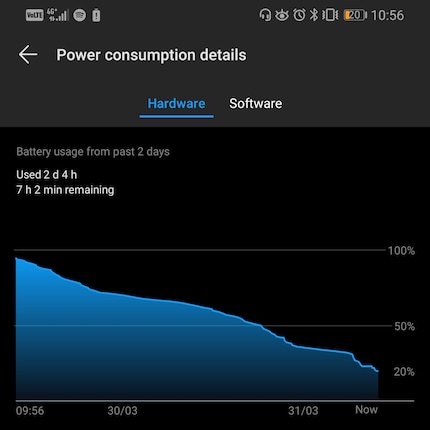
After two days and four hours, the warning appears at 20 per cent battery level: Please charge. That's 52 hours - after heavy use. That's impressive. Sure, I still remember my Nokia 6210, which ran out of battery every five days or so. But those were the old days, which Huawei is at least bringing back somewhat.
If you are charging the P30 Pro, I recommend using the 40-watt charger included in the scope of delivery.
The result:
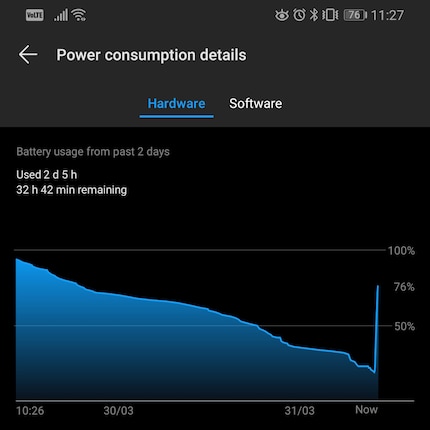
After 31 minutes, the battery had recharged by 56% to 76%. That's pretty impressive. With this battery power, I have over 24 hours of juice and don't really have to worry about anything.
This is by far the biggest and longest-lasting wow effect of the Huawei P30 Pro. Because while the rest is technologically impressive, the battery is a piece of quality of life and also an indicator of what Huawei wants to achieve with the P30.
The point at which Marketing fails
Just like the Huawei Mate 20 Pro, the P30 Pro runs on the Kirin 980 system-on-a-chip (SoC). This is nothing new. We have already seen the 6 GB RAM and AMOLED displays are standard. But Huawei has not simply rested on the laurels of the technology and its invention. It is obvious that the company has optimised the platform wherever possible. It's a different kind of arms race. Where the Mate 20 Pro proved technologically what Huawei is capable of, the P30 Pro proves technically what the engineers and programmers are capable of.
It is faster, smoother and more pleasant to use than any other smartphone from Huawei in the past. The device works, still has juice and is always fast. That's how a smartphone should be. Not something that forces itself on you, but something that stands by your side and is there when you need it.
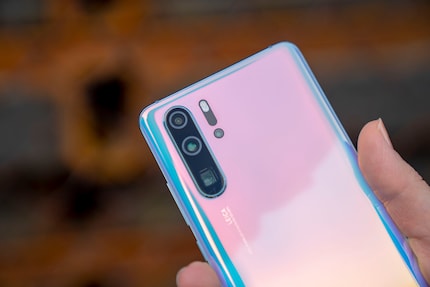
But despite all the great new functions, everyday use is still important. When you buy a smartphone, you naturally try out all the new functions. You switch off the light and see what the night mode can do. You grab a pink plush unicorn and play around with the aperture in Aperture Mode. But after a few days, you'll have seen everything and will rarely use the special features in everyday life. This is the point at which the marketing of a device can fail. Because then other things become important: battery life, warmth, charging time, screen quality and more. In everyday life, it is more likely that you will watch YouTube for two hours, quickly watch an episode of "Love, Sex and Robots" on Netflix in bed or read Reddit posts than that you will need every option on the camera. This is the point at which a smartphone can and must prove itself in the long term.
It is these everyday features that Huawei has honed. That's why the device with comparable specs performs much better than the Mate 20 Pro. The raw power of its predecessor seems to have been tamed and channelled in the right direction. It's not a lot of fun, admittedly, but it brings you a lot of convenience and benefits.
A little bit of Time of Flight
The camera system of the Huawei P30 Pro is impressive. There's the five-fold optical zoom in a periscope setup. This means that the actual lens of the periscope camera - which performs the zoom - is arranged at right angles to the other cameras. A prism reflects the light in and throws it onto the sensor, which is positioned upright in relation to the chipset. This allows a fivefold optical zoom. With hybrid zoom, 10x zoom is possible. If the software also cooperates, we are even at 50x digital zoom.
This works. There's not much more to say. That alone is impressive enough. Of course, your screen view is extremely shaky, because every millimetre of movement results in a radically different image when you're working with 50x zoom. Therefore, I recommend either a tripod or some practice with two elbows on a support and a steady hand.
I took the following picture with two elbows on a wall.

More impressive, but somewhat more controversial in terms of aesthetic understanding, is the night mode. When you take a photo in night mode, the P30 Pro opens up the lens, but strangely rarely goes down to f/0.95 - the widest aperture. A test in an almost completely dark studio shows that f/1.6 is sufficient for the smartphone. This is probably partly because the f/0.95 aperture can only be achieved virtually. The only sources of light were a ventilation shaft, which allowed some light to penetrate from the illuminated adjoining room, and the TFT display of our video producer Stephanie Tresch's camera, a Sony Alpha 7S II with a screen diagonal of three inches.
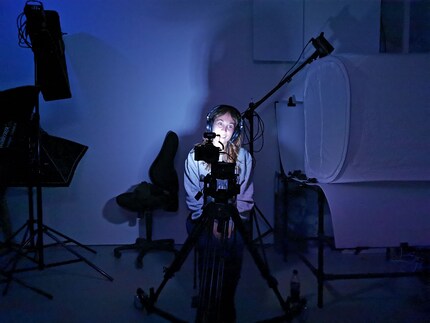
The EXIF data of the image shows the following values:
- Resolution: 10 megapixels
- F-Stop: f/1.6
- Exposure time: 8 seconds
- Focal length: 5.56mm
- Sensitivity: ISO 6400
However, if you use a normal camera with these settings in the same situation, you will hardly get a picture like this. This is because the photo is already manipulated on the smartphone before you look at it. The camera software plays a decisive role here. The more intelligent and finely tuned the software is, the better the image will be. The system recognises colours from the photo information and pushes them. Huawei has a weakness here: The programme is not particularly good at recognising shadows. We are used to shadows in pictures being black. Or at least dark. Like this, taken in Aperture mode with f/0.95.
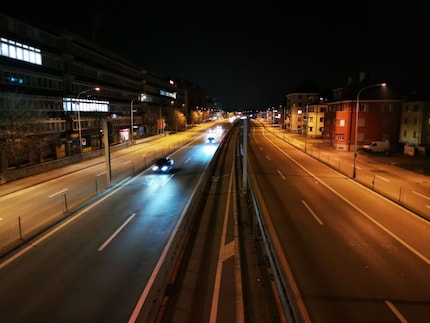
There are rich black areas and the night looks as a night should look. In night mode, however, it looks like this:
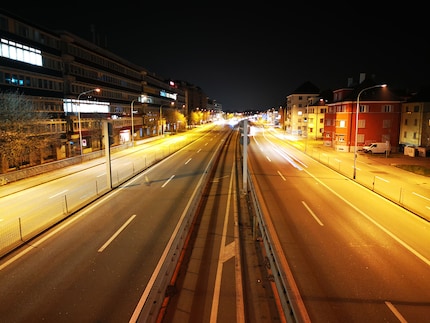
But if all colours are now pushed, then it becomes clear that the night black is not really black. It's a dark blue. This is lightened and so the night in the picture becomes a comic-like distortion. The cars in the foreground are also blurred out of the picture. On the bright side of this situation: this could be fixed with a software update.
Interesting detail on the side: The night mode of the P30 Pro is not omnipotent. Because nothing works without light. The camera system doesn't need a lot of light, but it does need a kind of background noise from light so that it can give the software what the software needs: Image information. It needs outlines, perhaps an idea of colour and as much detail as possible. A snapshot in an underground car park shows this quite clearly.
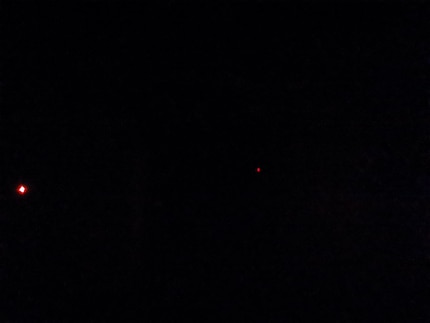
But just that: The Huawei P30 Pro has nothing to criticise technologically, i.e. purely in terms of the interaction between lens and software.
And while we're at it, shots like the following are possible in Pro mode.
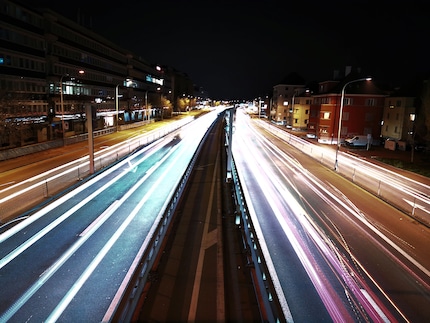
I like that much better. It has something, doesn't it?
Speaking of software: the missing feature in all smartphones
"You know what's annoying," says Stephanie, half asking, half realising and above all unaware that she has just stumbled across a feature that would really benefit all smartphones and their users.
She describes how she is lying on the sofa at home watching Netflix. She holds the P30 Pro in front of her face and turns it from portrait to landscape format, i.e. rotates it 90 degrees. It takes ages for the mobile to realise what she is doing and rotate the image by 90 degrees. We compare it with the Samsung Galaxy Note 9 and the competitor's smartphone actually reacts faster.
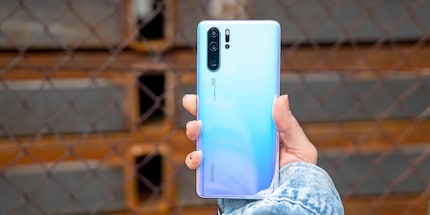
This does not necessarily have to be due to the hardware, as the motion sensor that detects the orientation of the smartphone is only of secondary importance here. It is a setting in the software that says at some point during tilting: "Picture, turn." The trigger comes later with Huawei than with Samsung. Stephanie and I agree that you only notice this problem if you can't fault absolutely anything else about a smartphone. We are operating at a level of perfection here that we have never seen before.
But from this we have concluded that this would be a really nice feature for Android as an overall system, and even for Apple's iOS. A setting in which you can tell your smartphone when the image should start rotating. This could be comparable to the SwiftKey function (Android and Apple iOS), which lets you determine how long a long press should be. I recommend plus or minus 200 milliseconds instead of the usual 450, but the tilt feature could be even more intuitive: You sit up straight, edit the setting and press a button when your pivot point is reached. From then on, the smartphone always rotates the image.
If that never happens, it's not the end of the world. But it would definitely be nice.
Darklingking gets an answer
I still owe user Darklingking an answer. He asked me in the comments whether I thought the P30 Pro was a candidate for smartphone of the year. After a few hours of playing around, an answer wasn't really possible or even somehow valid at the time.
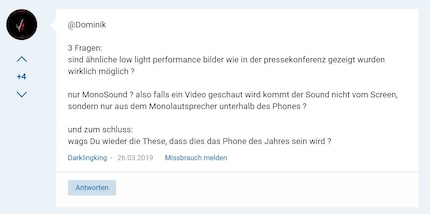
Now, after a few weeks of testing, I can say: Yes. The P30 Pro is a strong contender for smartphone of the year.
So, that's it. If you use the night mode in reasonably good light, you can simulate harsh light and take quite dramatic pictures. By the way.

Journalist. Author. Hacker. A storyteller searching for boundaries, secrets and taboos – putting the world to paper. Not because I can but because I can’t not.


